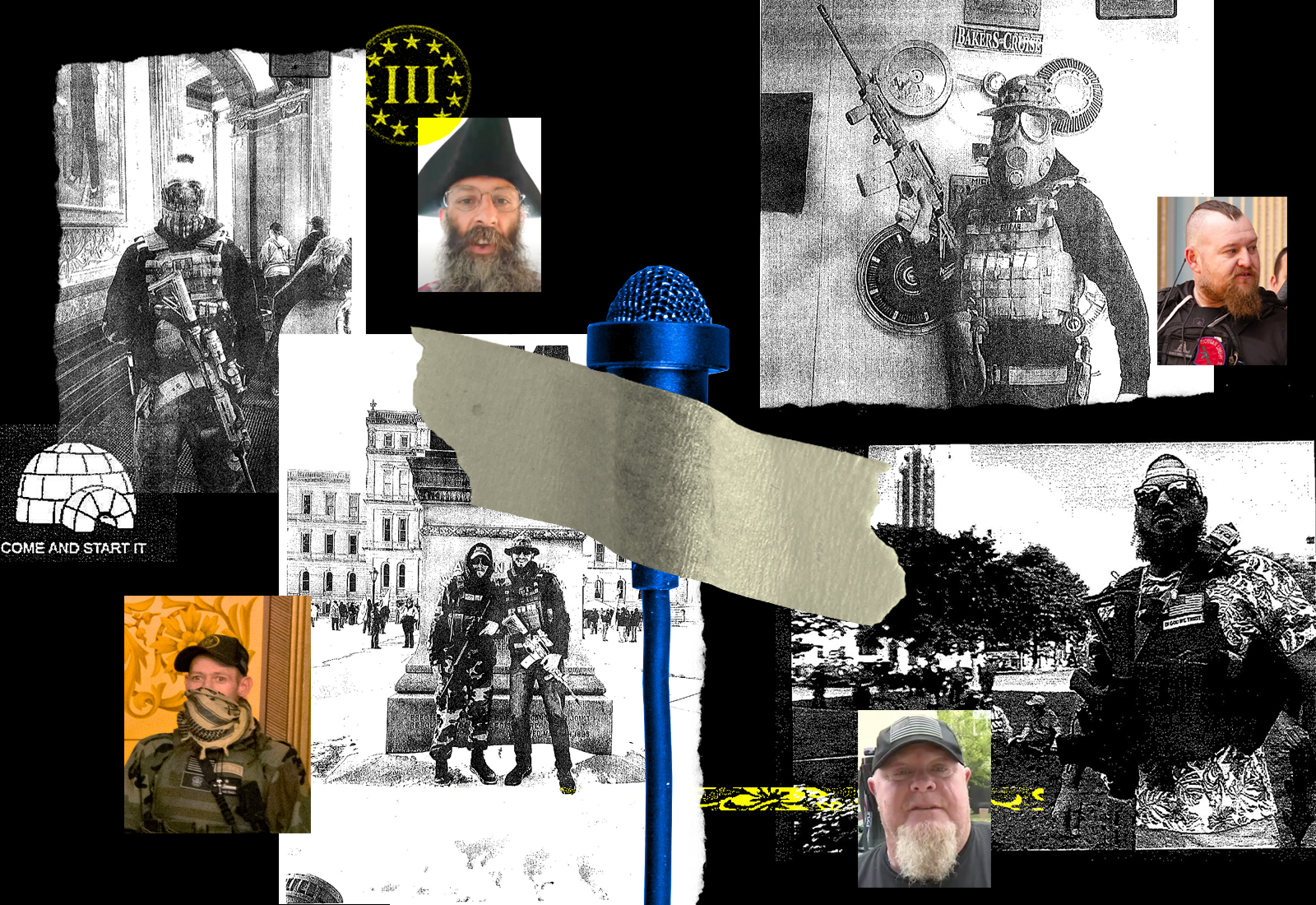In the inky darkness of a late summer night last September, three cars filled with armed men began circling Birch Lake in northern Michigan, looking for ways to approach Gov. Gretchen Whitmer’s three-bedroom vacation cottage, subdue her — using a stun gun if necessary — and drag her away.
One vehicle stopped to check out a boat launch while a second searched in vain for the right house in the thick woods ringing the lake. The third car ran countersurveillance, using night vision goggles to look out for cops and handheld radios to communicate with the others.
Earlier, they had scoped out a bridge over the Elk River, just a few miles away, scrambling down under the span to figure out where plastic explosives would need to be placed to blow it sky-high. That would slow police response, giving the men time to escape with the governor — who had infuriated them by imposing COVID lockdowns, among other outrages — and either take her to Lake Michigan, where they could abandon her on a boat, or whisk her to Wisconsin, where she would be tried as a “tyrant.”
“Everybody down with what’s going on?” an Iraq War veteran in the group demanded to know when they ended their recon mission, well past midnight, at a campsite where they were all staying.
“If you’re not down with the thought of kidnapping,” someone else replied, “don’t sit here.”
The men planned for all kinds of obstacles, but there was one they didn’t anticipate: The FBI had been listening in all along.
For six months, the Iraq War vet had been wearing a wire, gathering hundreds of hours of recordings. He wasn’t the only one. A biker who had traveled from Wisconsin to join the group was another informant. The man who’d advised them on where to put the explosives — and offered to get them as much as the task would require — was an undercover FBI agent. So was a man in one of the other cars who said little and went by the name Mark.
Just over three weeks later, federal and state agents swooped in and arrested more than a dozen men accused of participating in what a federal prosecutor called a “deeply disturbing” criminal conspiracy hatched over months in secret meetings, on encrypted chats, and in paramilitary-style training exercises. Seven of the men who had driven to Birch Lake that night would end up in jail.
The case made international headlines, with the Justice Department touting it as an example of law enforcement agencies “working together to make sure violent extremists never succeed with their plans.” Prosecutors alleged that kidnapping the governor was just the first step in what some on the right call “the Big Boog,” a long-awaited civil war that would overthrow the government and return the United States to some supposed Revolutionary War–era ideal.
The defendants, for their part, see it very differently. They say they were set up.

The audacious plot to kidnap a sitting governor — seen by many as a precursor to the Jan. 6 assault on the US Capitol by hundreds of Trump-supporting protesters — has become one of the most important domestic terrorism investigations in a generation.
The prosecution has already emerged as a critical test for how the Biden administration approaches the growing threat of homegrown anti-government groups. More than that, though, the case epitomizes the ideological divisions that have riven the country over the past several years. To some, the FBI’s infiltration of the innermost circle of armed anti-government groups is a model for how to successfully forestall dangerous acts of domestic terrorism. But for others, it’s an example of precisely the kind of outrageous government overreach that radicalizes people in the first place, and, increasingly, a flashpoint for deep state conspiracy theories.
The government has documented at least 12 confidential informants who assisted the sprawling investigation. The trove of evidence they helped gather provides an unprecedented view into American extremism, laying out in often stunning detail the ways that anti-government groups network with each other and, in some cases, discuss violent actions.
An examination of the case by BuzzFeed News also reveals that some of those informants, acting under the direction of the FBI, played a far larger role than has previously been reported. Working in secret, they did more than just passively observe and report on the actions of the suspects. Instead, they had a hand in nearly every aspect of the alleged plot, starting with its inception. The extent of their involvement raises questions as to whether there would have even been a conspiracy without them.
A longtime government informant from Wisconsin, for example, helped organize a series of meetings around the country where many of the alleged plotters first met one another and the earliest notions of a plan took root, some of those people say. The Wisconsin informant even paid for some hotel rooms and food as an incentive to get people to come.
The Iraq War vet, for his part, became so deeply enmeshed in a Michigan militant group that he rose to become its second-in-command, encouraging members to collaborate with other potential suspects and paying for their transportation to meetings. He prodded the alleged mastermind of the kidnapping plot to advance his plan, then baited the trap that led to the arrest.
This account is based on an analysis of court filings, transcripts, exhibits, audio recordings, and other documents, as well as interviews with more than two dozen people with direct knowledge of the case, including several who were present at meetings and training sessions where prosecutors say the plot was hatched. All but one of the 14 original defendants have pleaded not guilty, and they vigorously deny that they were involved in a conspiracy to kidnap anyone.
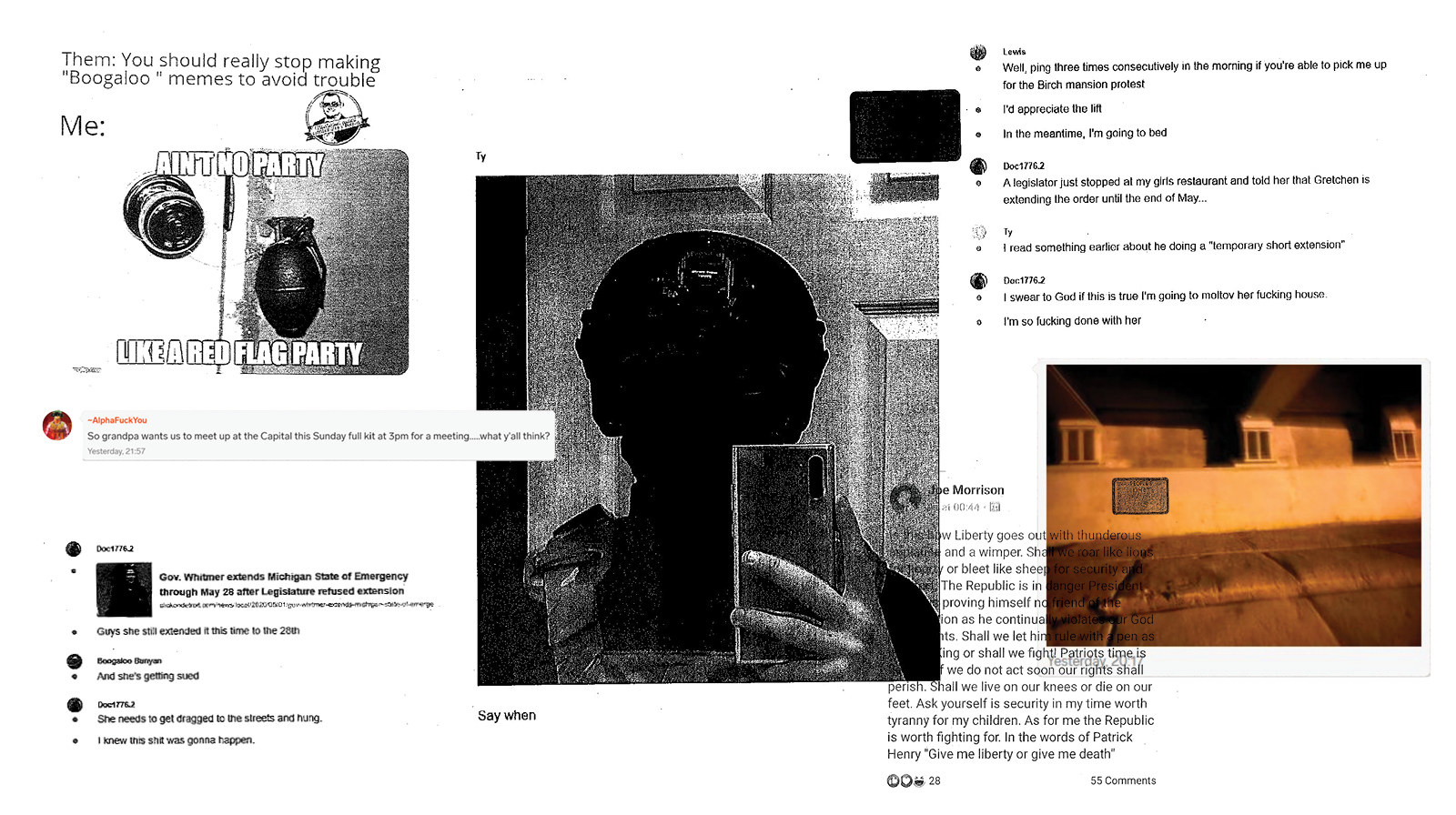
The prosecution gathered thousands of social media posts, some 400,000 text messages, and more than 1,300 hours of recordings — including audio or video from all three vehicles it alleges traveled to Birch Lake on the night of Sept. 12. It maintains that this evidence shows many of those who were charged not only expressed anti-government sentiments, but also took concrete steps toward the goal of kidnapping or killing law enforcement officers and elected officials.
But the defendants, as well as others caught up in the sweeping investigation — which stretched from Baltimore to Kansas City — claim their talk never rose beyond the level of fantasy and they never intended to harm anyone. Although they have not denied participating in training events, attending meetings, and communicating with other defendants, they claim that no actual conspiracy to kidnap the governor ever existed.
Instead, they say, they were targeted because of their political views. Some describe the case as a premeditated campaign by the government to undermine the Patriot movement, an ideology based on fealty to the Second Amendment and the conviction that the government has violated the Constitution and is therefore illegitimate. They argue that the recordings and text messages that the government calls proof of a criminal conspiracy are in fact constitutionally protected speech — expressions of frustration at what they see as the government’s betrayal of its citizens.
Attorneys for all but one of the defendants declined invitations to comment on the record for this story. To date, one defendant has formally accused the government of entrapment, arguing that the FBI assembled the key plotters, encouraged the group's anti-government feelings, and even gave its members military-style training. Additional defendants have said they plan to make similar claims when the cases, divided between federal and state court, go to trial starting as soon as October.
Last week, the lawyer for one defendant filed a motion that included texts from an FBI agent to a key informant, the Iraq War veteran, directing him to draw specific people into the conspiracy — potential evidence of entrapment that he said the government “inadvertently disclosed.” He is requesting all texts sent and received by that informant, and other attorneys are now considering motions that accuse the government of intentionally withholding evidence of entrapment.
Meanwhile, Gregory Townsend, one of the lead prosecutors handling the cases against eight of the defendants in Michigan state court, was reassigned in May pending an attorney general audit into whether he had withheld evidence about deals cut with informants during a murder and arson trial in Oakland County in 2000. And on Sunday, in a matter apparently unrelated to the alleged kidnapping conspiracy, one of the lead FBI agents in the case, Richard J. Trask, was charged in state court in Kalamazoo with assault with intent to do great bodily harm.
A spokesperson for the Michigan attorney general’s office said that the defendants’ claims “are not indisputable facts,” adding that the office “will counter and correct these issues in court.” The Department of Justice declined requests for an interview or to provide comment for this article, citing its policy not to discuss pending criminal cases. An FBI spokesperson said the bureau is aware of the charges against Trask but declined further comment for this article.
Claiming government entrapment is a common strategy in domestic terrorism cases — in part because it is among the only available defenses if prosecutors have evidence from extensive surveillance. Such defenses usually fail, and most domestic terrorism defendants are convicted.
But not always. Less than a decade ago, for example, an apocalyptic Christian group in Michigan was prosecuted for allegedly plotting to murder police officers. Among other things, the defendants claimed that the entire conspiracy was instigated by deeply embedded FBI informants, and the defendants were ultimately acquitted by the judge.
Since its founding 113 years ago, the FBI has relied upon, and often paid, confidential informants to aid in criminal investigations. Starting in the late 1950s, it has employed them specifically to infiltrate dissident groups and spy on targeted individuals, including the Black Panthers, the Ku Klux Klan, and Martin Luther King Jr.
The tactic has a decidedly mixed record. Informants have helped make cases that averted terrible violence. But informants have also coerced innocent people, falsified evidence, and even committed murder while working for the FBI. The bureau’s reliance on informants, much criticized in the 1970s, received renewed scrutiny in the wake of 9/11, when they were used to probe Muslim groups for alleged involvement in Islamic terrorism.
The Michigan case is unfolding at another fraught moment in American history. In court, the government has drawn a direct line between the alleged kidnapping plot and the Jan. 6 insurrection, holding up the storming of the US Capitol as evidence that the Michigan defendants posed a profound threat.
Last month, Attorney General Merrick Garland stressed in a speech about the government’s approach to domestic terrorism that it is focused “on violence, not ideology,” adding that “in America, espousing a hateful ideology is not unlawful.” But if the defense is able to undermine the methods used to build the Michigan case, it could add weight to the theory that the administration is conducting a witch hunt against militant groups — and, by extension, that the Jan. 6 insurrection was a black op engineered by the FBI.
Code Name: Thor
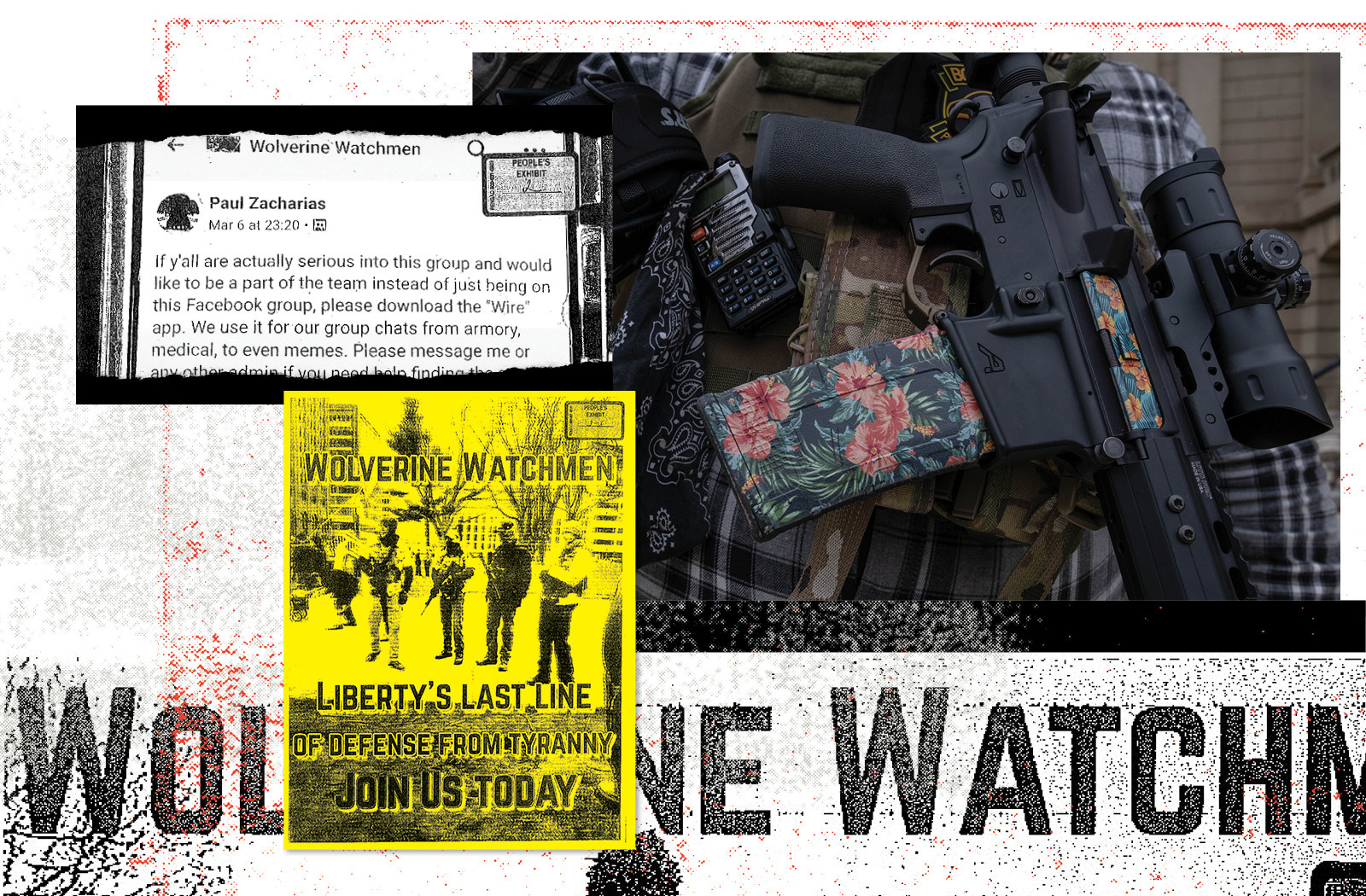
In the first days of March 2020, a 33-year old Army veteran named Dan logged on to Facebook, looking to connect with people who liked guns as much as he did. (Court records do not reveal his last name; BuzzFeed News is withholding it because of his concerns about his safety.)
There were lots of groups to choose from. Michigan, as the state’s attorney general told Congress in May, is “the original home of the militia movement,” and the Southern Poverty Law Center currently identifies no fewer than 22 “extreme antigovernment groups” active in the state. Timothy McVeigh trained with a group called the Michigan Militia Corps prior to carrying out the Oklahoma City bombing. And Justen Watkins, the US leader of the Base, an international neo-Nazi group, is a Michigan native and was arrested there last October.
But many of those groups say they have no interest in violence. They insist they offer only the opportunity to join a “well regulated Militia,” civic-minded organizations they believe are not only permitted but strongly encouraged by the Second Amendment to the US Constitution.
As Dan began scrolling through gun rights pages, he was prompted by Facebook’s algorithm to check out a private group called the Wolverine Watchmen, which described itself as “a group of Patriots” looking to “recruit like minded individuals.” After an initial round of screening, the group promised him the opportunity to train with them.
Dan, who would later tell his story in court, liked the sound of this. While serving in Iraq, he’d been a fire support specialist, charged with creeping to the frontlines and gathering intelligence, then calling in bomb strikes. He spent 68 days in Sadr City, breaching doors and clearing buildings amid fierce combat, eventually leaving the service with a traumatic brain injury and a fractured spine, among other injuries. Though he now worked at a post office near his home outside Flint, he wanted to keep in fighting shape.
A message on the group’s Facebook page urged him to download an encrypted messaging app called Wire. He was asked a series of questions about his political views sent to him by members of the group. “As long as you’re cool, we’re cool,” one member wrote. Dan responded that he was a libertarian, believed in small government, and had sworn an oath to defend the Constitution. He was admitted to the Watchmen’s main chat.
It was not what he had hoped for.
Dan wanted to maintain his hard-earned tactical expertise, which he considered a “perishable skill-set,” by running around in the woods and shooting at targets. But the Watchmen seemed focused on other things. In their encrypted chat, members made repeated references to something they called the Big Boog, the Big Igloo, or the Big Luau, and called themselves Boojahideen, all of which Dan would learn was shorthand for a long-awaited civil war known to adherents as the “boogaloo.”
And that wasn’t all. Buried among seemingly endless Second Amendment memes and jokes shared in the chat was a post from another member, named Pete Musico, asking the Watchmen to download a hunting app that he said they could use to track police officers’ addresses and murder them in their homes, according to court testimony.
Dan, shocked, showed the Wire chat to a friend who was a local police officer. A few days later, Dan got a text message from Special Agent Jayson Chambers, asking him to come to the FBI office in Flint.
He arrived feeling relieved that the matter was now in the FBI’s hands. Chambers and his partner, Henrik Impola, both members of the bureau’s counterterrorism unit, looked at the messages. But instead of telling Dan they would take over from there, they asked him to work undercover, secretly giving the FBI a window into the Watchmen’s activities and communications.
Dan felt he’d already done his duty by tipping off the feds. And he had a family to look out for. These guys were hoping for civil war and downloading hunting apps to help kill cops — what would they do to him or his young daughter if they found out he was a snitch? But he felt the greater threat was to law enforcement, so he agreed to do it. At the time there was no talk of money. But later, Dan would be given $24,000 and a new car for his services.
Between 2012 and 2018, the FBI spent an average of $42 million a year on payments to confidential informants, which it officially calls confidential human sources, according to a recent audit of the program by the Justice Department’s inspector general.
The audit was redacted to hide the total number of informants working for the FBI, but it emphasized that it was “important to have CHSs embedded in terrorist cells, violent gangs, and espionage operations, among others, in order to collect valuable evidence and investigative information.”
According to Greg Rogers, a retired FBI agent who spent two decades working undercover on cases involving domestic terrorism (and has a torso covered with gang tattoos to show for it), the standard playbook for domestic terrorism investigations is to start with an informant who can infiltrate a group and gain trust, and then bring in undercover agents. That’s an even bigger necessity in this era of social media, he said, when informants are often vetted based on their online identities, which are hard to fake.
“I used to attend militia conferences and gun shows, but I never got into a group without being introduced by an informant first,” Rogers said.
Many informants agree to help the government because they have gotten themselves sideways with the law and are hoping to get their charges dismissed, have their sentences reduced, or win other favors from prosecutors. Others are in it for the money; one longtime federal informant has allegedly hauled in some $4.9 million in government payments over the past two decades. It’s far less common for the FBI to recruit an informant — as it did with Dan — simply by appealing to his better nature.
On March 17, Dan officially went on the FBI’s books under the code name Thor. Impola laid out the ground rules. Dan could deceive the Wolverine Watchmen or other suspects, but he had to be truthful with the FBI. He could participate in the group’s activities, but had to stop short of anything illegal.
As a matter of law, convincing people with no prior intention to commit crimes is known as entrapment and is to be strenuously avoided by law enforcement. Federal agents and informants are instead supposed to passively develop evidence against people who are already “predisposed” to do illegal things, serving only as the eyes and ears of the prosecution.
In practical terms, however, confidential informants enjoy tremendous leeway to get the goods. Informants in cases over recent decades have badgered suspects into committing crimes, paid them large sums of money to do so, and even threatened to hurt them if they backed out, according to an analysis by Jesse Norris, a professor of criminal justice at the State University of New York at Fredonia. In not one of those instances was the prosecution forced to drop the case.
Dan got to work. Within weeks he was deeply ensconced within the Watchmen, training with them on weekends and teaching them the tactical skills that he had picked up in the Army.
At first, the FBI focused on the Watchmen’s three founding members: Pete Musico, 42 years old at the time and known as “Grandpa” or “Crazy Pete”; his 25-year-old son-in-law, Joe Morrison, aka “Boogaloo Bunyan,” with whom he lived; and Paul Bellar, or “Doc,” who dreamed of being a paramedic and at 21 was one of the youngest members of the group. In due time, however, the FBI expanded its target list to include not only the entire group, but potential suspects as far away as Virginia.
Getting Amped
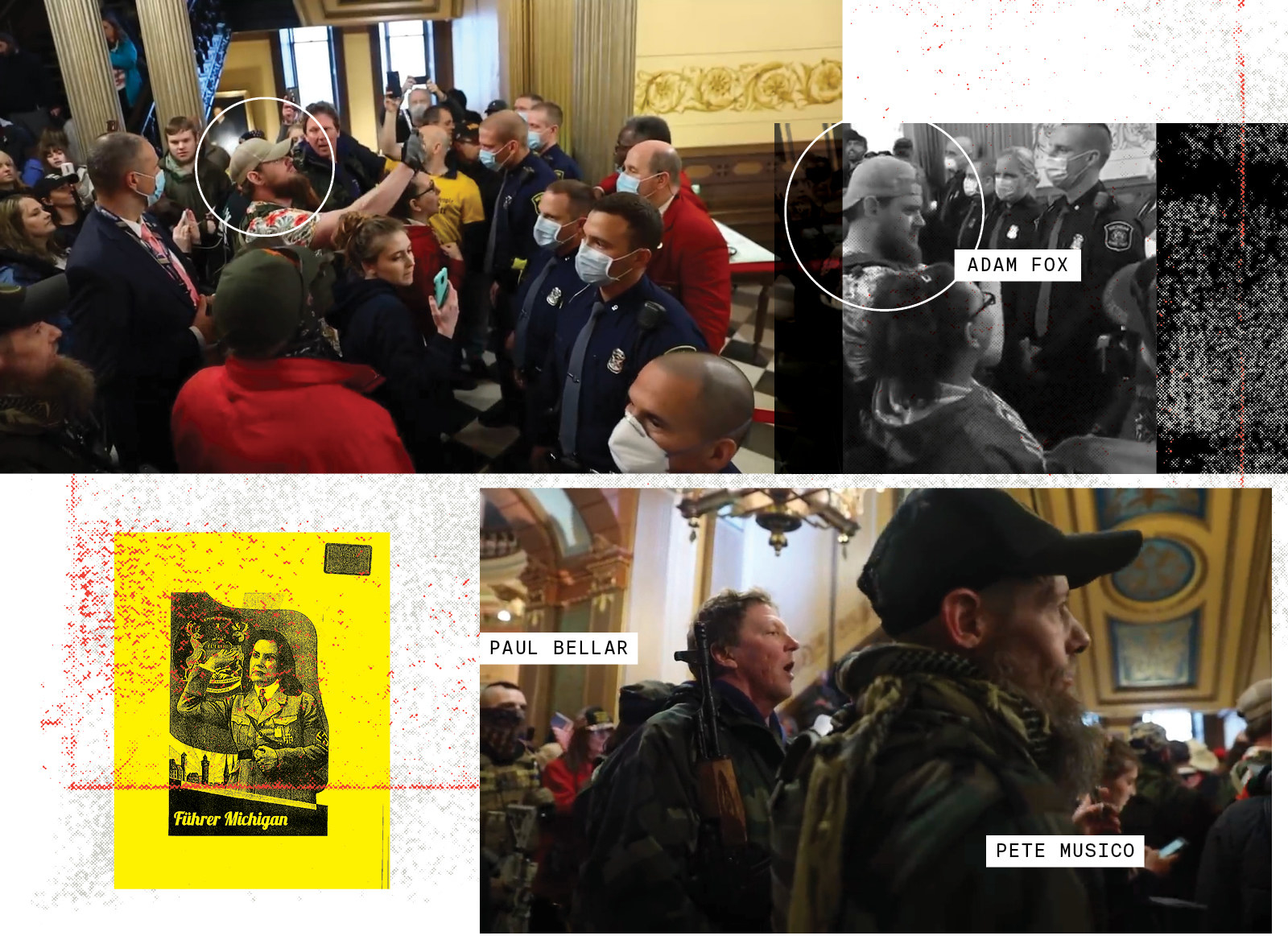
On the final day of April 2020, the Watchmen went to the state Capitol in Lansing to join a big protest against Whitmer’s COVID-19 stay-at-home order.
Dan wore a wire for the first time, traveling to the event with Musico, Morrison, and Bellar. The men were decked out in ballistic body armor, brandishing pistols and AR-15 assault rifles — de rigueur for the hundreds of protesters amassing in Lansing that morning. They were there, Morrison and Musico said, to recruit new members, but around noon, as they milled among the crowd, Dan started hearing whispers about storming the Capitol.
Less than two weeks earlier, the Watchmen had built a mock-up of a house using PVC tubing, and Dan helped show them how to push inside before clearing each room — techniques he’d learned in the Army. The Watchmen referred to it as a “kill house.” Now, outside the Capitol, it appeared they might be preparing to put that training to use — this time with hundreds of state police standing between them and the imposing renaissance revival building.
Bellar, in particular, was “getting amped,” Dan would later recall in court. He described Musico saying he wanted to circle the building, where he would wait for Whitmer and “catch that bitch as she came out the emergency exit.”
Panic rising, Dan slipped away from the group for a moment and spoke into the recording device he was carrying, which he knew was being monitored live by his FBI handlers. The Watchmen, he said, were preparing to breach the Capitol. The agents couldn’t speak back to him, but he hoped they could at least warn the police about what was coming.
Then something surprising happened. The Michigan State Police stood down and let the protesters — including those in full tactical gear — enter the building unopposed. They could even bring their guns, so long as they submitted to a temperature check for COVID-19.
The Watchmen rushed to the building’s second floor. Musico urged the increasingly frenzied crowd to push forward, according to court testimony. When he spotted state troopers, he got in their faces, screaming, taking pictures of their badges with his phone, daring them to touch him.
Elsewhere in the crowd was a sturdily built bearded man with an imposing AR-15-style assault rifle slung over his armored vest and the brightly colored Hawaiian shirt that has become a hallmark among “boogaloo boys.” At the time, 37-year-old Adam Fox had no close ties to any militant group, but he had been searching for one where he would fit in.
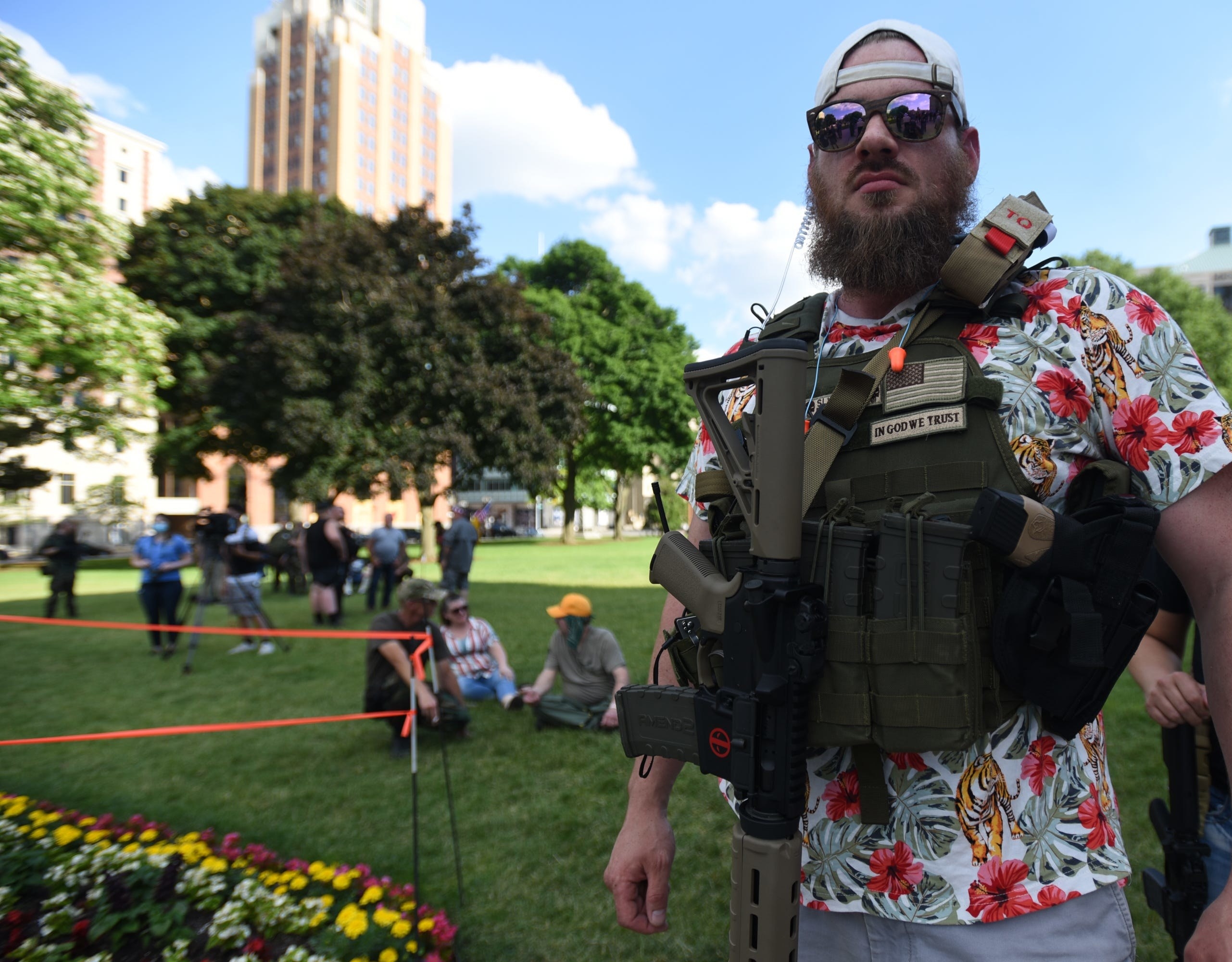
Fox was living with his dogs in the basement of a friend’s vacuum repair shop, the Vac Shack, in Grand Rapids. Lacking long-term employment, he smoked weed and spent hours on Facebook looking to make connections with other members of the Patriot community who felt angry at a government they felt had failed them, according to his fiancé at the time, Amanda Keller.
Fox’s main outlet was pumping iron. Keller, who was with him on April 30, said she had thought of Fox as a teddy bear, but his mood changed overnight when Whitmer, as part of her stay-at-home order, closed all the gyms in the state.
In photos taken inside the Michigan state Capitol that day, Fox looked strong and determined as he followed the crush of bodies circulating around the building’s corridors.
The Watchmen, meanwhile, had worked their way toward an office they thought was Whitmer’s and were banging hard on the door. Photojournalists began snapping pictures, and Musico, Bellar, and Morrison lined up in the hallway to pose menacingly for the cameras. But there was no actual violence, and the crowds eventually left without further incident.
The shocking spectacle of the militants occupying the Capitol grabbed the media’s attention. It was, the Associated Press reported, “an unsettling symbol of rising tensions in a nation grappling with crisis.”
One article featured a photo of Bellar with a mohawk, an American flag mask, and a huge rifle. A friend of his posted it online, commenting, “Holy shit Paul made it on Forbes. Nice.”
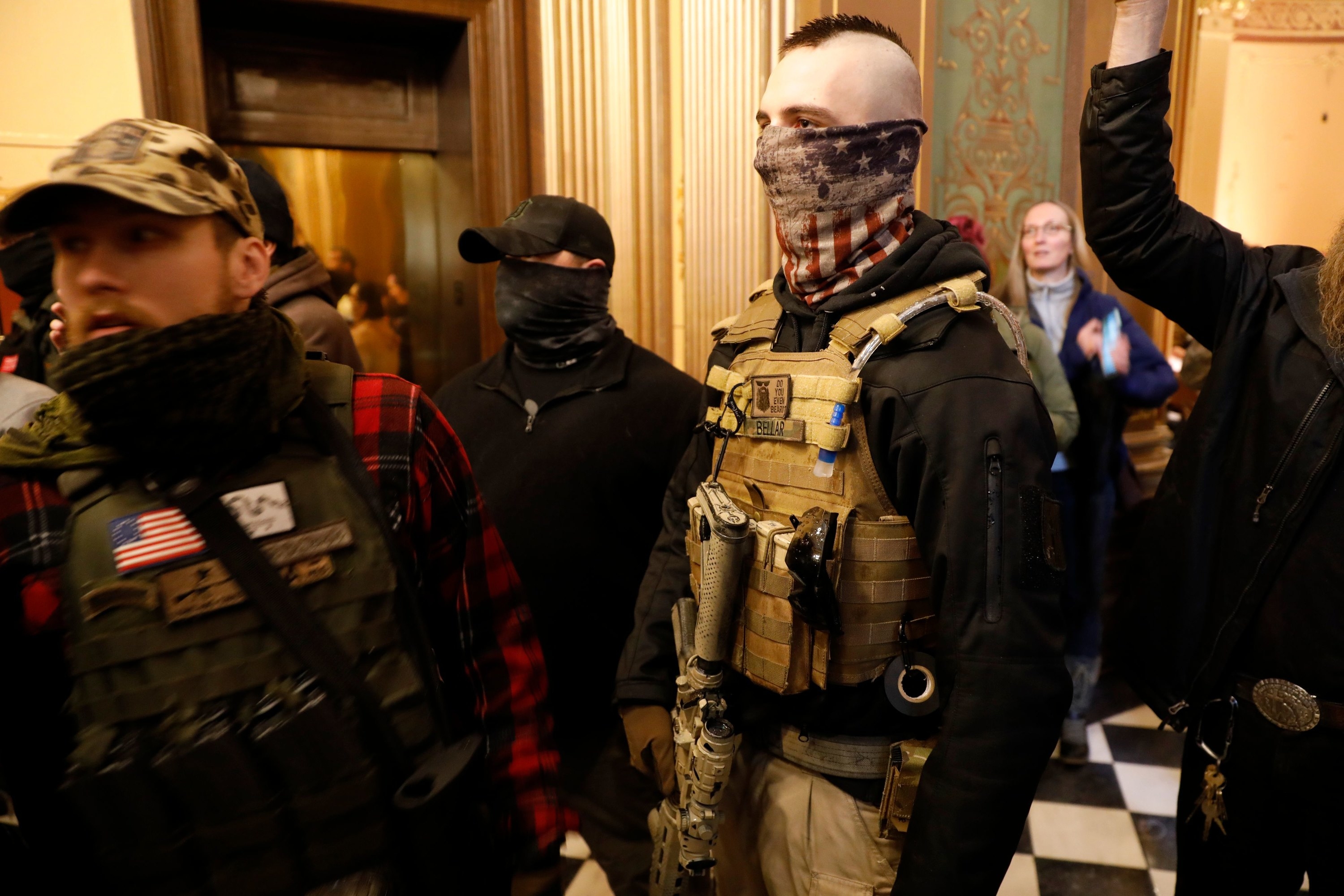
Bellar reposted the image in the Wolverine Watchmen’s private Wire chat, adding his own caption: “That moment when all your friends start noticing you weren’t kidding that you’re down to kill tyrants.”
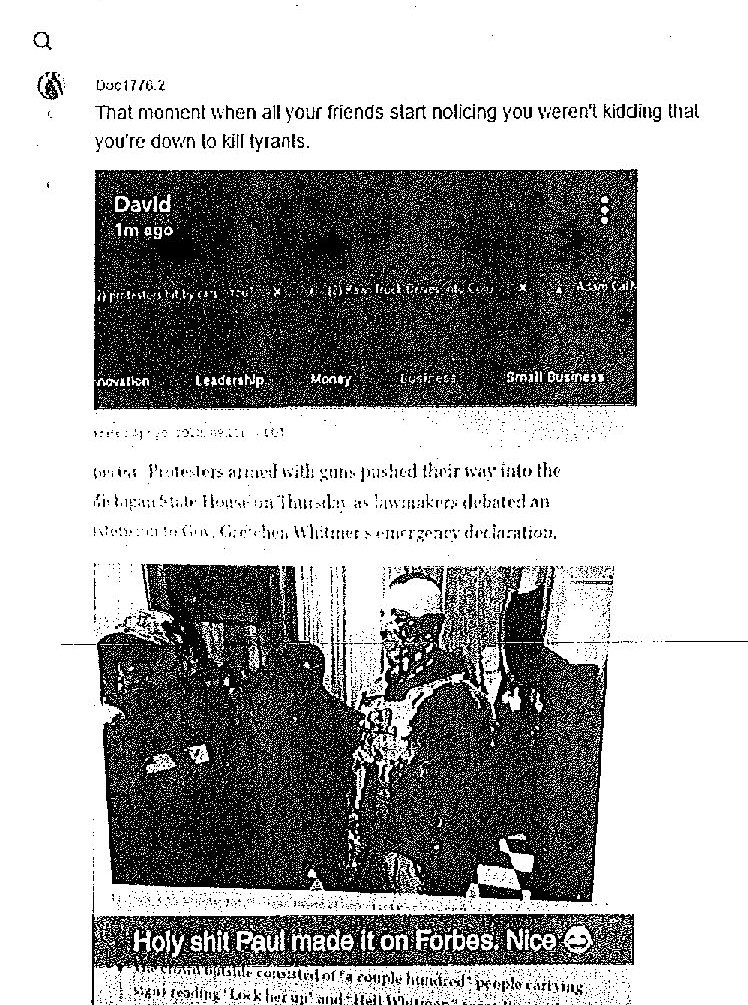
All the publicity boosted the Watchmen’s profile, and not long after, Morrison was invited to travel to Ohio for a “national militia meeting.”
Neither he nor any of the Watchmen ended up going, so the FBI went to Ohio without them.
A National Gathering

Stephen Robeson, a burly concrete and asphalt contractor from central Wisconsin, had helped organize the national meeting, and he was enthusiastically pushing people he knew to attend. Thomas Leager, a gun lobbyist from Wisconsin, later recalled being invited by Robeson so many times he'd lost count. Despite the pressure, Leager, busy with other things, declined to go, a decision he subsequently attributed to divine intervention.
Jeremy Deeter, a Three Percenter who lived only 20 miles from where the meeting was to be held, wasn’t sure he would go either. But Robeson, 57, called him so often, he said, he finally relented. On the morning of June 6, accompanied by his wife and daughter, he drove to the Drury Inn and Suites in Dublin, a suburb of Columbus.
Robeson, known as Robey, was a heavily tattooed biker with a shaggy tuft of beard springing from his chin. Both Deeter and Leager called him “brother.” But there was a lot they didn’t know about him, including the fact that he had a lengthy criminal record. By the time he was 20, Robey had been busted for car theft and soon added battery, possession of stolen property, forgery, disorderly conduct, theft, writing worthless checks, sex with a minor, bail jumping, and insurance fraud to his rap sheet.
And they definitely had no inkling that in March 1985, in an arson and murder trial of members of a notorious biker gang called the Ghost Riders, Robey had testified — for the prosecution.
According to court records, Robey had helped the government put people away at least three times in the 1980s and again in 2005, when he provided information about a farmer who was seeking to pay someone to kill a romantic rival or leave him “crippled for life.” Under direction from the Eau Claire police, Robeson told the farmer he’d put him in touch with someone who could do the job. That turned out to be an undercover police officer, who over lunch at a restaurant recorded the farmer offering a hay baler in exchange for the act of violence. The farmer eventually pleaded guilty to solicitation of battery.
Outside of his frequent legal adventures, Robey formed and led a group called the Wisconsin Patriot Three Percenters, and it was under the auspices of that organization that he started organizing the Dublin meeting.
The Three Percenters are a national organization named after the disputed notion that it was just 3% of American colonists who rose up and took arms against British rule. The group, loosely organized and highly fractious, was founded in 2008 by Michael Brian Vanderboegh, who believed that the government had drifted far from its constitutional ideals and was at risk of sliding into outright tyranny. A primary concern for Three Percenters is protecting gun rights, but the group also espouses the idea that citizens have the right to challenge their leaders. Its members, at times in full battle armor, make regular appearances at anti-government protests and other moments of civil strife, such as the 2017 Unite the Right Rally in Charlottesville. Last month, the Justice Department charged four Three Percenters with conspiracy as part of the Jan. 6 insurrection.
A primary goal of the Dublin meeting, Deeter and other attendees told BuzzFeed News, was to discuss opening a charter school dedicated to teaching Three Percenter ideals. Coming so soon after the killing of George Floyd, the nation’s racial divide was also a big topic of conversation, as were the recent protests and violence in cities across the country.
Participants had traveled from as far as Kansas City and Maryland. Adam Fox, the weightlifter who had been inside the Capitol in Lansing at the same time as the Watchmen, came down from Michigan, along with Keller. Just before the meeting started, James Kawasaki, a Three Percenter and born-again Christian from West Virginia, noticed someone taking his picture as he came back to the hotel from breakfast.
“The feds are everywhere,” Kawasaki recalls thinking to himself.
He wasn’t surprised. Like many of the attendees, he had long believed that the Three Percenters’ political beliefs made them targets of the FBI.
As a security precaution, people were asked to surrender their cellphones as they entered the conference room shortly before 9 that morning.
Several attendees recalled that most, if not all, of the conversation was anodyne. “What we want is for each and every one of our countrymen and -women to realize that the militia, and the Patriots, that you were told were a bunch of racists — that that is not true,” Deeter said at one point. “It was a tool to divide you against us. We are not racist, we are not hateful people, we want to stand with all of you with each and every one of you.”
But it wasn’t all about mutual support. At one point, Adam Fox was named leader of what people at the meeting called the “Michigan Regiment of the Second Continental Army,” a modern-day version of George Washington’s original Continental Army that would be ready for an impending civil war.
Some participants shared even darker ideas.
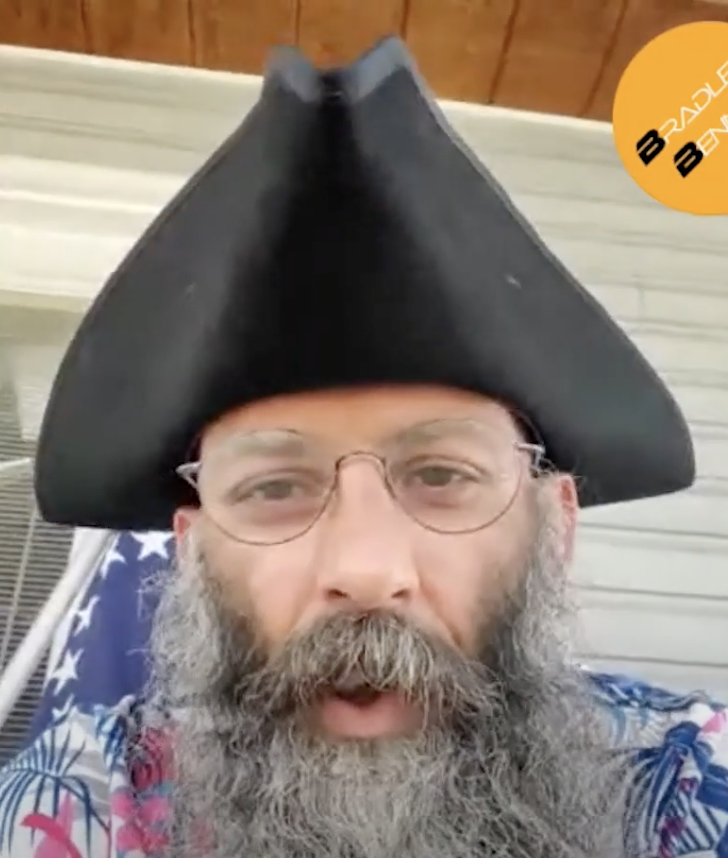
Barry Croft Jr., who along with Robeson organized the meeting, was known among Three Percenters as a cheerful sort, a long-haul trucker famous for his tricorn hat, thick Delaware accent, and penchant for long-winded speeches about the Constitution. But in Dublin, government recordings show, the 44-year-old talked about leveling buildings and burning houses down with people inside them. He also discussed creating distractions to divert police in order to “grab a fucking governor,” mentioning Gretchen Whitmer by name.
“I’m going to do some of the most nasty, disgusting things that you have ever read about in the history of your life,” he said.
It was a promise made in confidence, to a trusted audience. But despite all the security measures, the participants weren’t the only ones listening in. Croft’s vow — and a great many other unguarded moments — were being surreptitiously recorded for the benefit of the FBI.
A General Without Soldiers
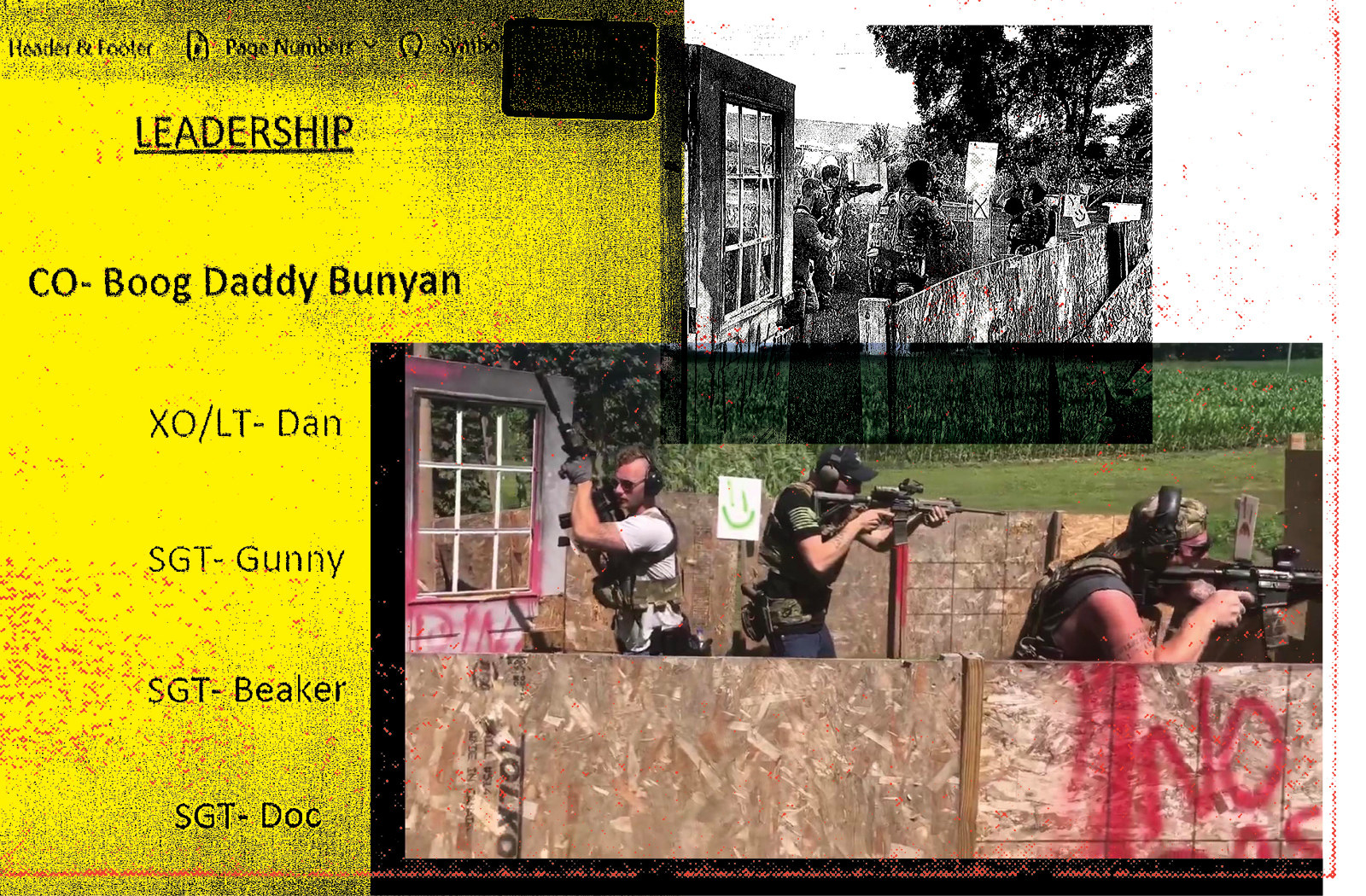
Late the following Sunday, Dan was ushered into the FBI’s office in downtown Flint, a one-story building with an unmarked door flanked by a pair of potted flowers.
He was there to make a phone call in the presence of his FBI handlers. It had been a week since the meeting in Dublin and matters were quickly advancing. For one thing, Joe Morrison had decided the Wolverines should connect with Adam Fox.

“This is some real shit guys,” Morrison wrote in the Wolverines’ group Wire chat. “Like real deal get shit done mfers.”
That Sunday, the Watchmen called Fox during a field training at Morrison’s house, but the connection was bad and nobody could hear much over all the gunshots. Dan, who had recently been elevated to second-in-command, or XO (for executive officer), offered to call Fox later. After training ended, he raced to the FBI office and placed the call on a recorded line.
As agents Impola and Chambers listened in, Dan pressed him about the meeting in Ohio.
Dublin, Fox said, was about changing the paradigm. The media treated Patriots unfairly. After he and hundreds of other Patriots occupied the statehouse in Lansing, “they fucking called us domestic terrorists.”
“We want to take that stigma off and let them know who we are because we’re not fucking racists, we’re not white nationalists,” said Fox. “We just want our fucking Constitution upheld and we want all these lawless fucking tyrants out of fucking power. It’s that simple.”
Dan steered the conversation away from rhetoric to specific plans, asking Fox what the “mission” was. “Like what are we looking to go forward with?”
Laughing, Fox said his dream was to “have the governor hogtied down on a table” for public display, the way DEA agents spread seized guns and drugs across a table like trophies after a big bust.
“We take the building and then take fucking hostages,” Fox told Dan. “It’s fucking wartime.”
But by his own admission, Fox — despite his new, seemingly grand military title — was a general without soldiers. “I can’t do nothing with less than 200 men,” he complained to Dan. At best, he figured, he could muster “maybe 15 to 20” men.
Stopping violent ideas like this was what Dan said drove him to law enforcement in the first place, but now, with his two FBI agents at his side, he told Fox he would help.
“Hey man,” Dan said. “If you want to come and train at Joe’s sometime with us that would be great.”
“Dude, we are down to fucking train, brother, for sure,” Fox replied.
Confidential informants, as a rule, are told very little about the investigations they’re assisting. They generally don’t even know the identity of other informants in the same case. It was very unlikely, therefore, that Dan knew the scope of what he’d just pulled the Watchmen into.
But Impola, Chambers, and FBI agents spread across more than a half-dozen states knew exactly what was going on. The Watchmen, with Dan as the second-in-command, were now at the heart of a far-reaching, multi-state domestic terrorism investigation dubbed operation “Cold Snap.”
Snatch and Grab

Joe Morrison founded the Wolverine Watchmen in November 2019, just four days after he’d been hauled into court on a minor gun possession charge, and from its first days, the group focused on discussing police abuse and fantasizing about fighting back — what an FBI agent in the case later described as “a grievance and hatred towards law enforcement.”
Members decried police killings of civilians, including Breonna Taylor, Oscar Grant, and Eric Garner, three unarmed Black people, along with LaVoy Finicum, a rancher killed by law enforcement during a standoff in Oregon’s timber country in 2016. They labeled the FBI domestic terrorists and the Michigan state police the “Gestapo,” while calling for attacks on the ATF and other federal law enforcement agencies.
“Patriots time is fleeting,” Morrison urged on Facebook. “If we do not act soon our rights shall perish.”
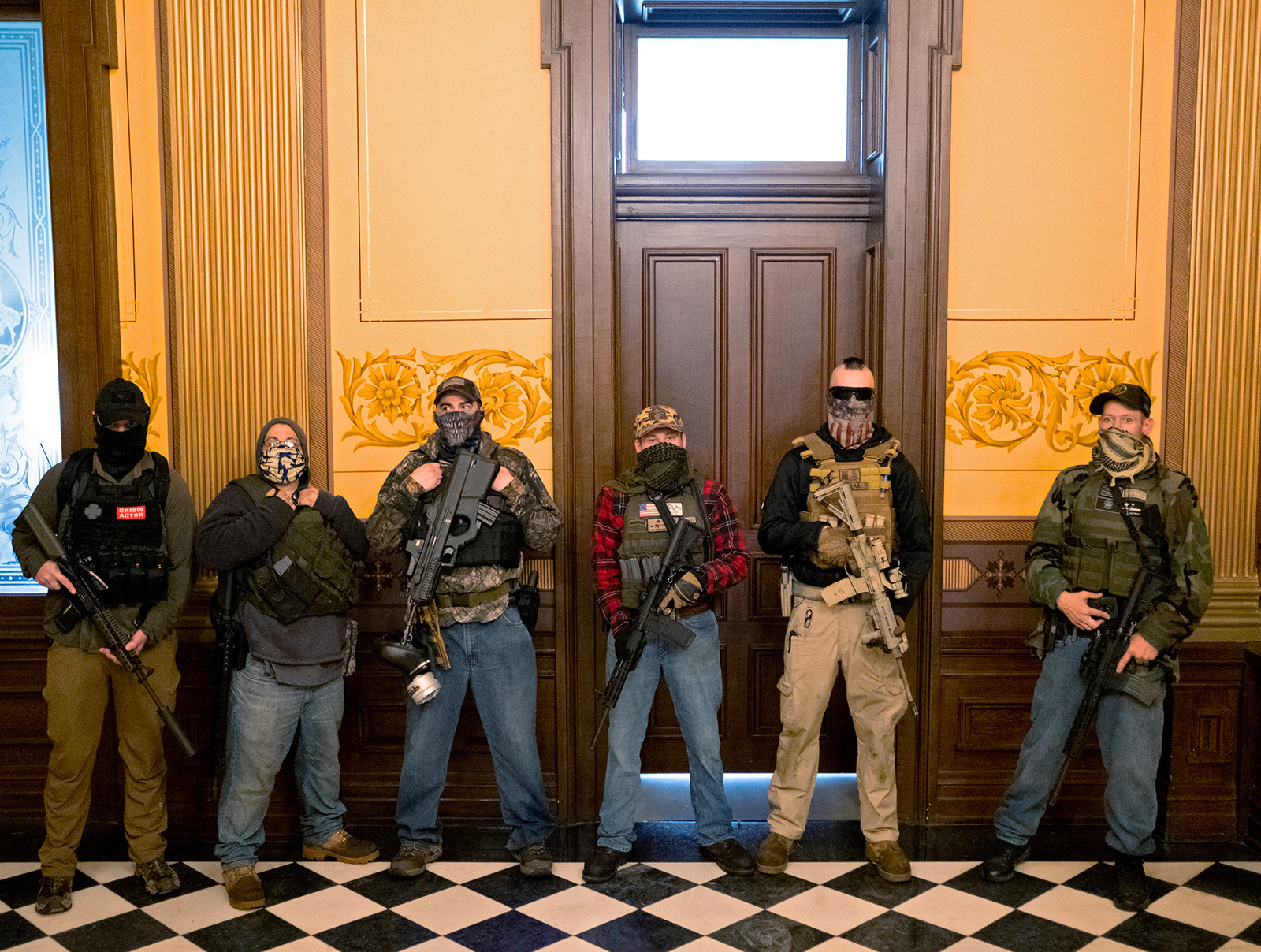
But the Watchmen’s attention shifted after Whitmer shut down the state in the face of soaring COVID-19 infection rates. Within days, Pete Musico was allegedly calling for her arrest. A few weeks later, when it became apparent that Whitmer would extend the stay-at-home order, Paul Bellar wrote in the Wire chat that she needed to be dragged in the streets and hanged.
“I swear to God if this is true I’m going to molotov her fucking house,” he wrote. “I’m so fucking done with her.”
Memes shared among the Watchmen throughout the spring of 2020 reflect their growing ire. One, a photo of Whitmer looking pensive, calls her a communist and imagines her thinking “how can I screw michiganders today.” Another accuses her of planning to take everyone’s guns. A third has her wearing a Nazi peaked cap, while a fourth photoshops Whitmer’s head on Adolf Hitler’s body. Then there’s the picture of the governor, designed to look like a screenshot from PornHub, bearing the caption “gross slut fucks whole state.”
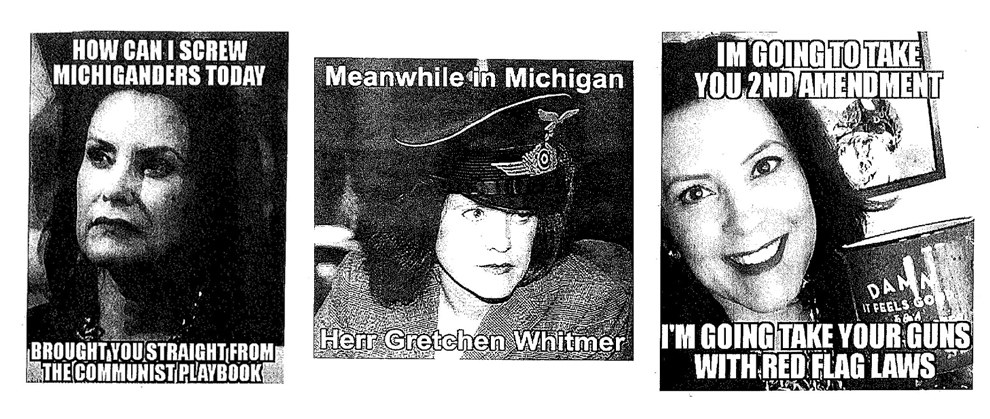
Musico bragged that he had thrown Molotov cocktails in cops’ homes and showed off a lump of something he claimed was C-4. But there was no proof he’d ever attacked any officers and the plastic explosives later turned out to be fake. All the tough talk had never gotten beyond jokes and disturbing but vague rhetoric.
Fox, some of the Watchmen began privately remarking to one another, appeared to operate on a different level. On June 18, the Watchmen met Fox as a group for the first time outside the Capitol in Lansing at a Second Amendment Rally. He made a show of patting everyone down to check for recording devices — he failed to notice Dan’s — and seemed prepared to storm the building that very day.
Fox’s plan A was to rush in and execute all the legislators on live television, according to court documents and testimony. If that didn’t work, there was always plan B, which was to lock the doors and burn the building to the ground with everyone in it.
Two days later, several of the Watchmen went to meet Fox in the basement of the Vac Shack. It was far from a proper apartment; access was through a trapdoor hidden under a rug, and the space was crammed with old motors, belts, nozzles, and hoses. Fox demanded they put their cellphones in a box so they couldn’t be recorded. But Dan was there, wearing a wire as usual.
Like many Patriots, Fox had become increasingly concerned about the country in the face of coronavirus lockdowns and Black Lives Matter protests. He believed the government had overreached and was violating the rights of the public and that, following the presidential election, the entire nation would collapse into violent unrest.
Listening to him that night, Bellar, the Watchman who had been so delighted to find himself in Forbes magazine after the April protest, became convinced that Fox was out of his mind and repeatedly shared those concerns with Dan, court testimony shows. Morrison, the group’s commanding officer, also expressed reservations about Fox.
But Dan used his growing influence to include Fox in group meetings and to develop his own personal relationship with him. Fox, in turn, began referring to Dan as his “brother,” according to Fox’s former fiancé.
On June 28, Fox came to Morrison’s property in Munith for a training. After the session was over, Musico gathered everyone inside for a “circle of trust” to discuss plans. Dan was there and, until his battery died, he recorded it all.
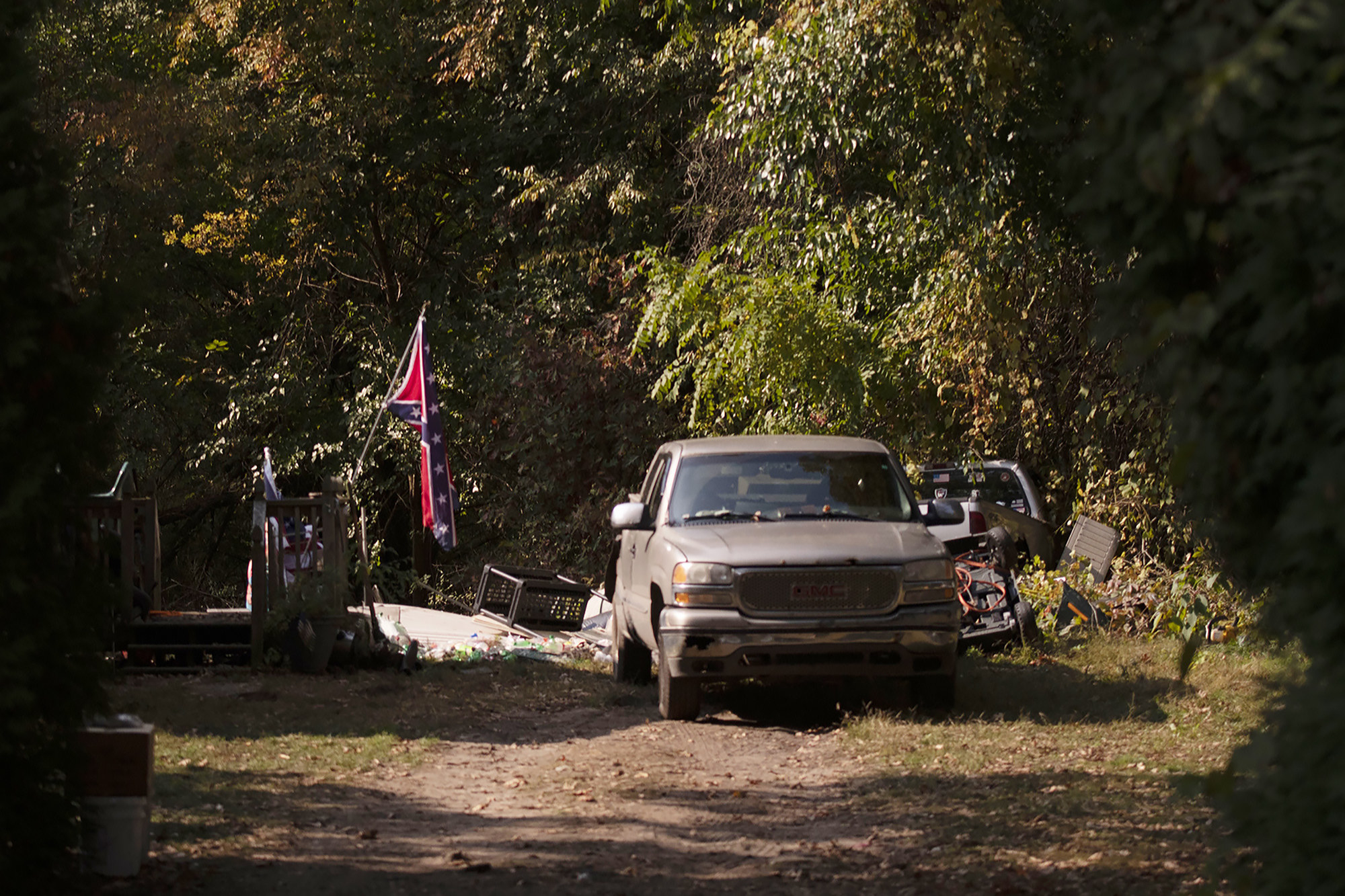
Until that point, Fox’s energy had been narrowly focused on storming the state Capitol. But the Watchmen worried that would be too hard to pull off. Conversation instead turned to kidnapping, a prospect favored by Musico, who also suggested they knock on the doors of police or politicians late at night in order to drag them off and kill them. He added that anyone who didn’t feel comfortable attacking politicians should leave the group.
“Who’s down for kidnapping tyrants?” Fox asked the others.
A few weeks later, Dan drove five Watchmen and 6,000 rounds of ammunition to Cambria, Wisconsin, for a national training exercise organized by Robeson. He rented a Suburban for the weekend, paid for gas, and subsidized food and lodging for the group, all courtesy of the FBI.
The event was held on a sweltering July weekend and drew Patriots from at least five states, including Barry Croft. The Delaware trucker, who drove more than 1,000 miles to attend, at one point attempted to detonate a pair of bombs he and two members of the Watchmen had constructed from balloons, black powder, and ball bearings. The devices failed to explode.
That evening, July 11, Robey, Croft, Fox, and all of the Watchmen who’d traveled to Wisconsin met for dinner. They had a wide-ranging discussion but the main focus was “kicking off the Boog” — planning a violent event that would set in motion the civil war many at the table believed was imminent.
As they ate, they considered various kidnapping plans, as well as the idea of attacking a Michigan State Police outpost. Someone proposed forming a charity to help raise money they’d use to acquire guns and ammunition. Robey and Croft invited everyone to another meeting the following weekend in Peebles, Ohio. Before the evening ended, Dan went outside with Croft and two other Watchmen to talk about how they could “manufacture” weapons.
Then, in the final days of July, Dan returned to Fox’s place in Grand Rapids. This time he went alone. Conversations during his previous visit had been all over the map, but this time it was focused on what they’d need to kidnap Whitmer and kick off the Boog.
“Snatch and grab, man. Grab the fuckin’ governor,” Fox said. “Just grab the bitch. Because at that point, we do that, dude — it’s over.”
That same day, according to text messages read in court, Paul Bellar told his fellow Watchmen he was buried in debt and leaving Michigan to move in with his father in South Carolina for a fresh start. At almost the same time, Morrison told the group that he too was temporarily stepping away from the Watchmen. He’d been having marital problems and needed to take a break.
Dan was now the Watchmen’s highest-ranking officer. He and Fox began planning in earnest, meeting up and spending hours on the phone. At one point, Dan encouraged Fox to “write a manifesto” of his belief system and his plans, but Keller, his fiancé, said she told him that was a terrible idea.
As summer progressed, Fox seemed increasingly focused on Whitmer, evidence presented by the government shows. On Aug. 9, during a field training exercise at Morrison’s property, he asked the Watchmen, “who is down for kidnapping her?”
In previous conversations, some Watchmen had expressed reservations about kidnapping. A month earlier, for example, Kaleb Franks, a 26-year old who went by the moniker “Red Hot,” had told several other Watchmen, including Dan, that he was “not cool with offensive kidnapping” and had only joined the group “for training.”
But now some of the men seemed emboldened; in a second meeting later that same August day, they discussed details, including what weapons would be helpful to the operation.

Ty Garbin, a 25-year-old airplane mechanic and an original member of the Watchmen, said he was in, but urged Fox to wait until after the presidential election. In court, Dan said that Fox disagreed, telling him in a phone call the following week that the kidnapping had to happen sooner, so they could “hit the reset button on politics in the US.”
Dan was spending increasing amounts of time chatting with other Watchmen, talking to Fox and some of his friends on the phone, and attempting to recruit others who might be willing to participate in the evolving plot. By late August, Watchmen began reaching out to Morrison to tell him they no longer wanted to be members, but instead would continue to train with Dan and Fox, the informant later recounted in testimony.
FBI agents, meanwhile, kept pushing Dan to use his influence to bring more people into the developing kidnapping plot.
On Aug. 28, Impola texted Dan, saying he had “a few goals for today” including getting the informant to invite three Watchmen — Daniel Harris, Garbin, and Brandon Caserta — to accompany him on a surveillance of Whitmer’s home. “I default to getting as many other guys as possible, so whatever works to maximize attendance,” the FBI agent wrote.
Dan responded that while he thought he could convince them to accept his invitation, his vehicle “might be filled” with others he’d already corralled for the mission, including Fox.
Impola seemed pleased with the plan. “That would be a good day,” he wrote.
After the next day’s surveillance outing, Fox shared photos and a video, in an encrypted chat, of the governor’s property as well as a crude map that prosecutors said he’d drawn. In a text chain with Dan, Garbin, using emojis, proposed blowing up the bridge on Route 31 — apparently oblivious to the fact that there was another bridge over the river just a few blocks away.
Then, on the night of Sept. 12, Dan, Fox, Robeson, and several other Watchmen returned to Whitmer’s home for a nighttime surveillance. It was on this trip that they explored the logistics of exploding the bridge, using a boat launch to approach the house, and potential escape routes.
By this point, Dan had managed to insert an undercover FBI agent — “Red,” a supposed explosives expert — into the group. A second undercover agent, known as Mark, had also joined up, after a woman posing as his girlfriend had approached Fox’s then-fiancé, saying they wanted to train.
The morning after the surveillance, Red talked to the group about the explosives they’d need to pull off the kidnapping and kick off the Boog. For $4,000, Red said, he could get enough C-4 to blow the Elk River bridge sky-high. The next training exercise wasn’t scheduled for a month, and men decided to use that time to raise funds.
In early October, Dan contacted several members of the group individually. Red, he told them, was “going to have some gear,” including medical kits and plate carriers, that he would give away — a tantalizing prospect for many members.
Dan added that this would also be a good moment for them to bring some “good-faith” cash to give Red for field-training gear, by which the government says he meant the plastic explosives.
The Takedown
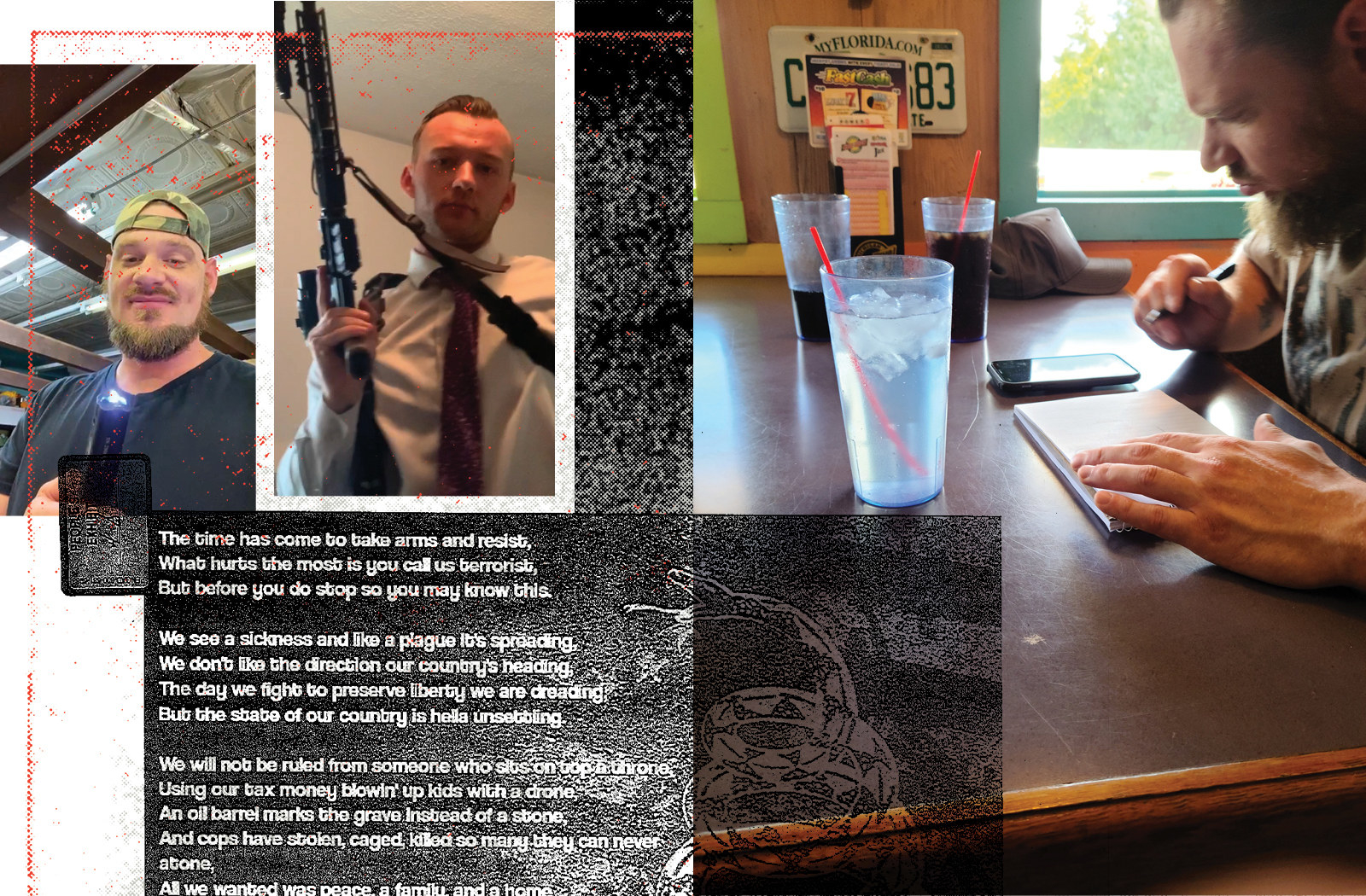
On the evening of Oct. 7, a cool autumn Wednesday, Dan drove to a large warehouse next to the interstate in Ypsilanti, stopping along the way to pick up four other men.
As they drove, Daniel Harris, a Wolverine Watchman who was sitting directly behind Dan, fidgeted with a 9 mm pistol. He’d rack the slide, load a cartridge in the chamber, then unload and dry-fire the weapon, according to testimony by an FBI agent. Then he’d do it again.
“What the hell are you doing?” Dan asked Harris.
In response, Harris raised the pistol and pointed it at Dan’s head.
“Get that thing away from me!” Dan yelled.
The men were expecting to meet Red, but they didn’t bring much cash. Kaleb Franks had only $23 in his wallet; Fox had $275. Collectively, they were nowhere near the $4,000 they’d pledged to pay for the explosives.
As it turned out, the only thing awaiting them in the warehouse parking lot was the FBI’s Hostage Rescue Team — in full tactical gear, bearing arrest warrants and handcuffs.
Dan had escorted them to their own takedown.
After being separated and interviewed by the FBI, all the men who had come to Ypsilanti — Fox, Harris, and two other Watchmen, Garbin and Franks — were booked into jail for conspiracy to commit kidnapping, a federal crime with a maximum sentence of life. The agents made a show of arresting Dan as well, and it would be some time before the other men realized he was an informant.
Caserta, meanwhile, was arrested at work on the same charge that same evening, and some 600 miles away in Swedesboro, New Jersey, FBI agents arrested Croft when he pulled his Kenworth tractor trailer into a convenience store parking lot.
Simultaneously, Michigan State Police, working with the FBI, arrested Morrison and Musico, as well as Eric Molitor, Shawn Fix, and Michael and William Null — men who had met with Fox to discuss plans, accompanied him on surveillance operations, or attended the meetings in Ohio. In South Carolina, Bellar was picked up and later extradited to Michigan. They faced no federal charges, but the Michigan attorney general accused them of a number of crimes, including providing material support for terrorist acts and making terrorist threats, both of which are part of Michigan’s Anti-Terrorism Act, passed in the wake of Sept. 11, and carry lengthy prison terms.
After the arrests, elected leaders from both sides of a deeply polarized country rushed to heap praise on the FBI. “I’m so thankful to federal, state and local law enforcement for taking the threat seriously and getting to the perpetrators before they could act,” said US Rep. Elissa Slotkin, a Michigan Democrat who was a prominent critic of the Justice Department under Trump.
“A threat against our Governor is a threat against us all,” added Mike Shirkey, the Republican leader of Michigan’s state Senate. “We extend our gratitude to the men and women in law enforcement for their work to thwart this plan.”
A week later, the Michigan Attorney General charged a Wisconsin man named Brian Higgins, whose only involvement in the case appears to have been driving one of the three cars that had traveled to Birch Lake to surveil Whitmer’s home and letting others use his night vision goggles. The government didn’t stop there. In the days and weeks after the arrests, agents were knocking on doors across a wide swath of the country, seizing computers and cellphones, asking about guns and, in particular, political ideologies, according to several individuals who were questioned. Are you a Three Percenter? Are you a boogaloo boy? Do you know Adam Fox? They came to Jeremy Deeter and James Kawasaki, both of whom had been at the Dublin meeting but claim they had nothing to do with the Michigan plot. Neither has been charged.
Frank Perry, a Baltimore man whose only apparent connection to the entire matter was attending a late summer gathering in Delaware that also drew Robey and Croft, got busted on a gun possession charge and later took a plea deal.
Throughout the Patriot community, the realization sunk in that some of the people they had called friends might be working for the FBI. If that were true, maybe they were all being watched. Who, they wondered, would get charged next?
Lines of Defense
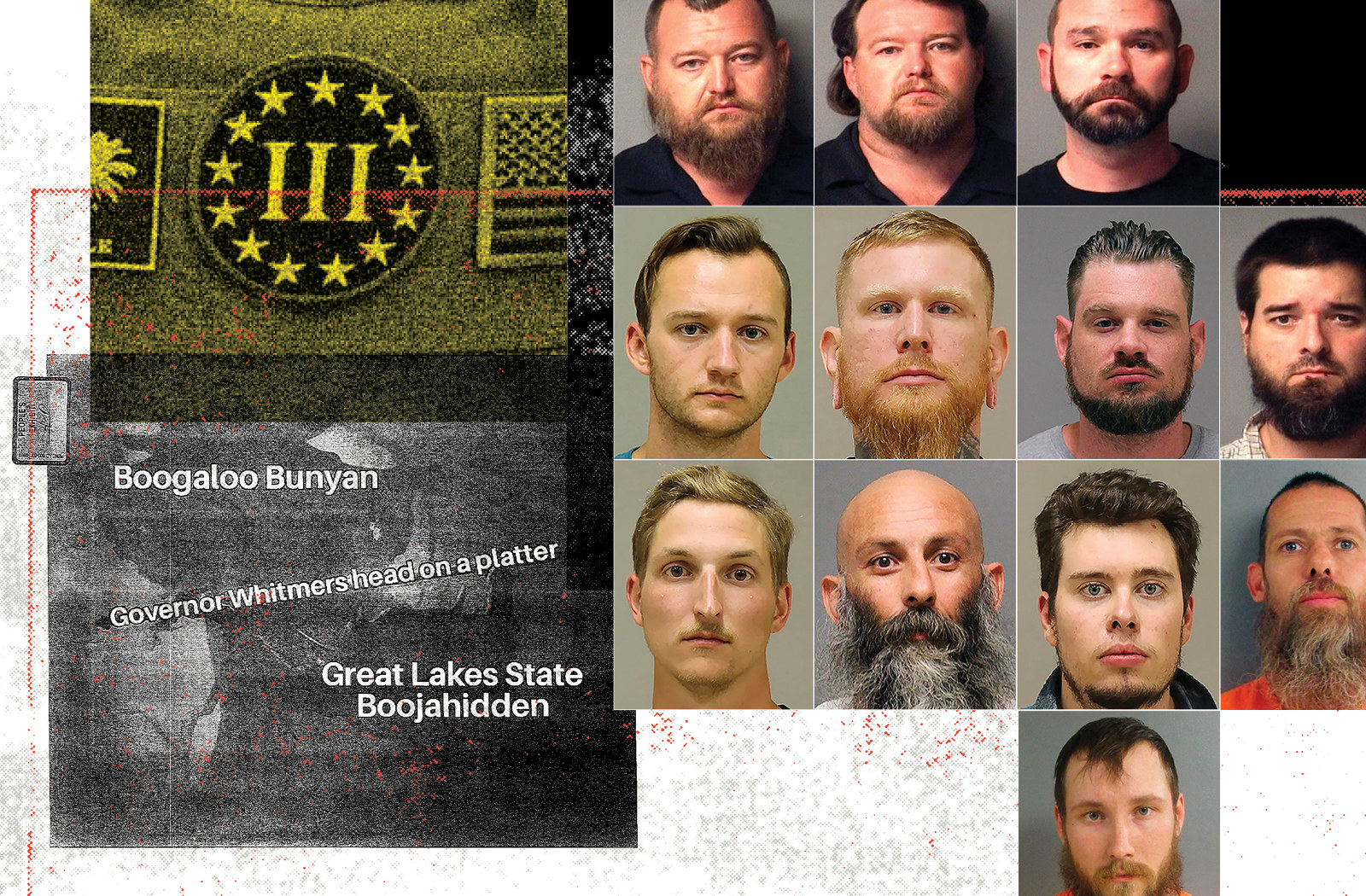
On Jan. 13, Croft made his first appearance in federal court. Because of COVID he’d been stuck in a detention center in Philadelphia and hadn’t been able to join his five codefendants during their first hearing in October.
Early in the hearing, lead prosecutor Nils Kessler asked Croft to raise his left arm so the magistrate judge could observe the Three Percenter logo — a Roman numeral three surrounded by stars — tattooed on the back of his hand.
According to Kessler, the tattoo tied the case to broader anti-government unrest in the country, and particularly the storming of the US Capitol, which had taken place exactly a week before the hearing.
Croft’s attorney, Joshua Blanchard, protested, noting that Croft had played no part in what had happened on Jan. 6; after all, he’d been behind bars for three months.
But Kessler persisted. Croft “is clearly part of and has held himself out as a national leader of a militant violent extremist group,” Kessler told the court. “And he's asking to be released from custody, so the fact that he's a leader of a group that assaulted the Capitol last week should have some bearing on whether it's a good idea to let him out.”
Over the defense’s objections, the judge allowed Kessler’s line of argument. The parallels between the contentious events in Michigan in 2020 and those in Washington, DC, on Jan. 6 — the anti-government rage, the threats against elected officials, the storming of a legislative building by heavily armed people — were simply impossible to ignore.
In both cases, ideologically driven militant groups like the Three Percenters, the Oath Keepers, and the Wolverine Watchmen played a decisive role in converting pent-up anger into action.
But the similarities went only so far. Law enforcement was so unprepared for Jan. 6 that every member of Congress and a sitting vice president were forced to flee in terror. Five people died, and the Justice Department was forced to build what is arguably its largest investigation ever in order to bring people to justice.
In Michigan, on the other hand, the feds were so far ahead that each and every suspect had been assigned his own FBI agent. Whitmer was informed of the plot weeks before she was ever at risk, and prosecutors had collected thousands of recordings, videos, text messages, social media posts, and numerous friendly witnesses by the time the first arrest warrant was signed.
In late April, federal prosecutors added new charges, including conspiracy to use a weapon of mass destruction for the bomb plot, a felony with a potential life sentence. They also, for the first time, formally accused the defendants of being “engaged in domestic terrorism” with a goal of influencing the “conduct of a government by mass destruction, assassination, or kidnapping.”
Attorneys for the accused men have hinted at a variety of defenses, including the claim that there was no conspiracy at all. Some point out that their clients had left Michigan long before the arrests, while others contend that any conversations or activities they took part in are protected by the First Amendment, and represent little more than idle talk taken out of context by prosecutors.
But facing what one defense lawyer recently called a “haystack” of damning evidence, many say they are convinced their best option may be the one that is hardest to pull off: convincing the jury that the feds, so deeply invested in the massive investigation, had engineered the entire thing.
Some buckled. In January Garbin, who’d made the drive to surveil Whitmer’s house, pleaded guilty and agreed to cooperate with the Justice Department. Another Watchman, picked up on a gun charge this April, flipped as well.
But Pete Musico’s lawyer, Kareem Johnson, wasn’t ready to concede. Although his client wasn’t charged in federal court, he faced multiple charges in state court in Jackson County. Along with Morrison’s attorney, Johnson had managed to get one of those charges, for making terrorist threats, dropped. And on May 18, he filed an entrapment motion in Jackson County court, demanding that the remaining charges against his client be dismissed as well.
Johnson, a progressive Black public defender in a conservative and overwhelmingly white county, was an unlikely advocate for Musico, who flew the Confederate flag outside his house. But when Johnson first met his new client, sitting in jail, Musico burst into tears. Johnson said he saw a man who might spout off wild ideas — even his friends called him “Crazy Pete” after all — but not a hardened terrorist. Musico, he concluded, was a loudmouth, being charged not for his actions but his speech.
Johnson and the other defense lawyers have taken pains to note that despite his claims that he acted as a good Samaritan, Dan was rewarded financially for his work as an informant. In testimony, Dan described how his handlers eventually gave him envelopes of cash, covered his mortgage and car payment, and also bought him a phone, computer, and the new vehicle. When Dan sold his house in December because he was concerned people in the Patriot movement knew his address, the bureau even reimbursed him for what he testified was a $4,500 loss on the deal. The grand total for his seven months of work, including reimbursement for expenses, was $54,793.95, considerably more than most families in Dan’s part of Michigan bring home in a year.
“All of this evidence underscores the extremely active and coercive role the CHSs played in this matter,” wrote Scott Graham, Kaleb Franks’ attorney, in a motion filed last week.
Many of the defense attorneys have argued that the Watchmen would never have been involved in any kind of plot at all if it weren't for Dan. It was Dan, the combat veteran, who taught the Watchmen the military tactics that made them attractive to someone like Fox, the attorneys claimed.
It was Dan, too, they said, who had brought Fox into the group despite objections from multiple Watchmen that he seemed “crazy.” It was Dan, along with Robeson — another informant — who had supported Fox’s kidnapping plan, and Dan who acted as the personal chauffeur to the Watchmen, Fox, and others to ensure they had every opportunity to conspire. He even provided snacks.
“The Confidential Informant took the Wolverine Watchmen from YouTube copycats to a combat group with military-style training,” Johnson wrote in his entrapment motion, which is still pending.
Croft’s attorney, Blanchard, advanced a similar argument about the government overplaying its hand, focusing on the actions of Robeson. It was Robey who had invited Croft to the meeting in Dublin and, he suggested in court, paid to rent the conference room and lodging for some attendees. Robey helped organize the subsequent meetings in Wisconsin and in Peebles, Ohio, and Robey had a hand in convincing Croft to travel to Michigan in September just in time to spy on Whitmer’s lakefront home. Robey had even invited Higgins to Michigan, a foray that landed him in a jail cell.
Dan, of course, had not been charged. Nor had Robey — leading many to suspect that he too had been working on the government's behalf.
Patriots including Deeter, Leager, and Kawasaki began posting videos fingering Robey as a potential informant. About a month after the takedown, they even questioned him online for more than two hours. A fast talker, he deflected question after question with answers that seemed sincere but sometimes made no sense. In January, Blanchard named him in open court, and some of the defense attorneys began exploring the idea of calling him to testify on their clients’ behalf. If they could get Robey on the stand, they reasoned, it might reveal a great deal about the government’s direct involvement in fostering the conspiracy. One called him a “professional snitch.”
Then, in early March, something curious happened: Robey was indicted.
The single charge sprung from an incident 11 days before the takedown, when Robeson was caught with a sniper rifle capable of blasting a .50-caliber slug a mile and a half away. As a convicted felon, Robeson couldn’t touch such a weapon.
That charge meant he could face up to a decade in prison. But it also meant he probably wouldn’t be a viable witness for the defense, since he would be almost certain to plead the 5th to avoid incriminating himself. It seems unlikely that he will ever testify about his role in the plot. His trial in Wisconsin federal court is currently set to begin on the exact same day — Oct. 12 — as the Michigan case.
Robey has denied nothing in his own criminal case. Yes, he’d had the gun. But, his lawyer argued, he’d also had something else: permission, as a confidential informant, to “engage in illegal conduct.”
Robey’s actions, no matter how far outside the lines, were done with “authorization from the FBI.” ●
Opening image credits: BuzzFeed News; Michigan Office of Attorney General; Seth Herald / Reuters; Jeff Kowalsky / AFP via Getty Images; The Bradley Bennett Show via YouTube; WMTV; Getty Images
Correction: Eric Garner was killed by a police officer using a prohibited chokehold. An earlier version of this story said he had been fatally shot by police.



